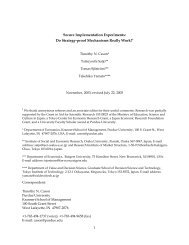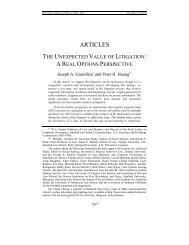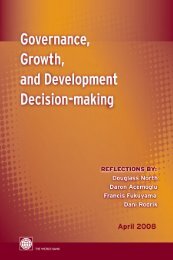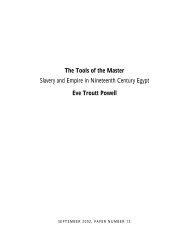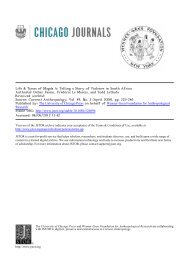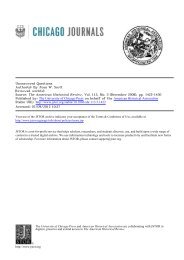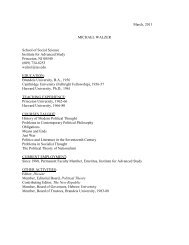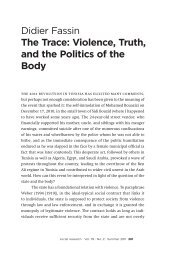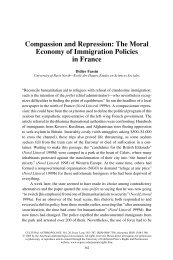Peter H. Huang Harold E. Kohn Chair Professor of Law James ...
Peter H. Huang Harold E. Kohn Chair Professor of Law James ...
Peter H. Huang Harold E. Kohn Chair Professor of Law James ...
You also want an ePaper? Increase the reach of your titles
YUMPU automatically turns print PDFs into web optimized ePapers that Google loves.
Emotional Impact Analysis<br />
about how firms and societies engage in and can foster research and development, growth, and innovation<br />
obviously do not assume that production possibilities and technological constraints are fixed and<br />
immutable. In addition, some economists have come to realize that individual preferences are culturally<br />
and socially constructed in addition to being malleable in response to advertising, experience, imitation,<br />
and persuasion. Moreover, some consumer researchers, marketing pr<strong>of</strong>essors, and psychologists address<br />
how to construct preferences. 296 EIA should build upon such research.<br />
Another potential concern about EIA is whether or not it would be too financially costly or<br />
resource prohibitive to perform EIA studies, at least currently because regulations might have their own<br />
fairly unique set <strong>of</strong> emotional impacts. At least with CBA, regulators can draw upon a pre-existing large<br />
number <strong>of</strong> CBA studies for analogous benefits and costs to a particular regulation. But EIA does not<br />
already have that large collection <strong>of</strong> data at hand. So basically every EIA must start more afresh, which is<br />
a big drawback in terms <strong>of</strong> passing timely regulations. One response to such a concern is all this provides<br />
all the more reason to start requiring EIA. A second response is that some forms <strong>of</strong> EIA, such as those<br />
about investor confidence or trust, process concerns, and social mood are important for all financial and<br />
securities regulations. Moreover, high quality CBA, as opposed to the hand-waving, perfunctory<br />
discussions <strong>of</strong> CBA that many financial and securities regulators do, would not be cheap either. EIA thus<br />
is expensive only in comparison to low quality CBA all too prevalent among financial and securities<br />
regulators today.<br />
A direct and more basic response is that, as described above already, a small, but growing number<br />
<strong>of</strong> economists have already developed statistical techniques to examine how external factors affect SWB.<br />
For example, economists found that an individual’s own reported utility losses from terrorism are likely<br />
to far exceed terrorism’s purely economic consequences. 297 Another pair <strong>of</strong> researchers estimated the<br />
295 Fisher & Statman, supra note 130, at 115. See also<br />
http://www.thestreet.com/tsc/basics/tscglossary/leadingeconomicindicators.html.<br />
296 See e.g., THE CONSTRUCTION OF PREFERENCE (Sarah Lichtenstein & Paul Slovic eds., 2006)<br />
297 Bruno S. Frey, Simon Luenchinger & Alois Stutzer, Calculating Tragedy: Assessing the Costs <strong>of</strong> Terrorism,<br />
Institute for Empirical Research in Economics, University <strong>of</strong> Zurich Working Paper No. 205 (Sept. 2004).<br />
48



